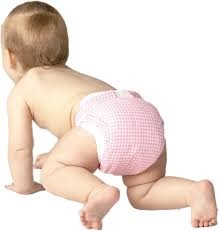 Crawling is the one milestone you do not want your baby to skip. Although to us crawling may seem pretty simple, we often underestimate the effect that this action has on brain and movement development. Crawling is important for the development of muscle strength, balance, coordination, fine motor development, vision, spatial understanding and problem solving, all aspects important for walking later on. Research has also shown that school-going children who have skipped crawling generally struggle more with sports involving the upper limb, ball sports, mathematical concepts and copying work from the blackboard. Crawling can develop any time from 6 to 10 months of age (for premmies, remember to correct their actual age). Your child will not attempt to crawl unless he has mastered stable sitting yet. He may not necessarily crawl in the traditional fashion, but may instead prefer bum shuffling, crawling backwards, leopard crawl, bear walk (on hands and feet) or crab crawl (“upside down”). Do not worry if he is a bit slow to move, or if he prefers to motor himself around in a more non-conventional way. Do seek medical advice, however, if your child uses only the one side of her body to attempt propelling himself forward, or if he makes no effort at all to move his body around purposefully by age 10 months. How can I help my baby master the art of crawling?
0 Comments
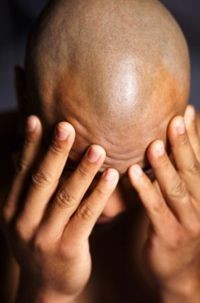 Headache is one of the most common and debilitating conditions around. Any veteran of headaches will know that once it has properly kicked in, your entire system struggles to operate effectively. While it is a much researched topic, many of the causes of headaches are still being debated upon. Possibilities for the source of headaches are endless, ranging from tension to tumors, sport and sex. Where do we start eliminating? Below is a list of often-missed factors that may be responsible for the hammer pounding in your head. These can all be addressed by simple lifestyle alterations, which may just help for those headaches never to return again.
SO WHEN SHOULD I WORRY ABOUT MY HEADACHE? The following are pointers that may indicate a more serious reason behind your headache. Seek medical help if any of these occur:
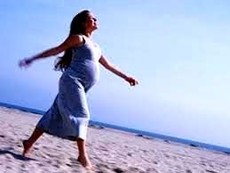 Yes, we know you are big and uncomfortable, your back hurts and you are tired at the end of the day. But guess what, instead of adding even more strain and effort, mild exercise may actually turn all of these around for you! A couple of good reasons for moms-to-be to get moving: Control weight gain: Weight gain in pregnancy is inevitable – and important! However, excessive weight gain will leave you with some unneccesary flab after labour. Regular moderate exercise now, will save you a massive lot of effort in weight loss later. Improve fitness and heart health: During pregnancy, your heart needs to work on an extra 1.25 litres of blood than before. Controlled aerobic exercise will assist to strengthen your heart muscle, improve oxygenation to your body and improve your fitness. This will also improve your general endurance, and you may feel less short of breath in the later stages of pregnancy. Increase energy levels: In adjunct to fitness and heart health, exercise improves circulation to all parts of the body, and improves the transfer of oxygen to the cells, leaving you feeling more energised. Your endurance increases, your sleep improves and you will just feel much more energetic in general. Prevent back pain and stability: Strenghtening of your core muscles will take strain off your vertebrae, and improve your balance when your centre-of-gravity starts to become, well, a bit off-centre. Decreases your chances of contracting pregnancy-related medical conditions, such as diabetes, constipation, high blood pressure, varicose veins and blood clots. Swollen feet and ankles will also be significantly alleviated. Decrease stress and anxiety and improve mental health: There may be a million reasons for you to feel a bit under the weather. Maybe you feel slightly like a whale, or you are stressing about the financial implications of raising a child, or the prospect on parenthood may be a bit too daunting. Often, with bigger baggier off-balance bodies, our self-confidence may fade away. Whatever your reason, exercise will help you feel more in control of yourself and your body. The release of feel-good hormones will also help lift your spirit quite a bit. Aids with easier labour: Whether we want to know it or not, labour is a marathon event. The fitter and stronger your body, the easier the labour process will be – plain and simple. Increases your recovery rate: Whether your baby are delivered normally or via C-section, the body goes through a lot to get the little one out into this world. Fitter and stronger mommies are able to get up and move about much quicker, and can handle and nurture their babies comfortably much sooner than their couch-potato counterparts. Ideas for moderate exercise: Not all of us are gym fanatics or marathon runners. Here are some alternative ideas:
Important things to remember:
So go on and get moving ladies! You owe it to your body and baby!
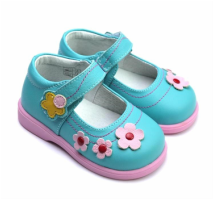 Not many things beat the absolute cuteness of a size 0 baby shoe. Be it on the shelf of your favourite baby store, in a gift bag at your stork tea or on a photo announcing the coming your bambino, you just can’t wait to try that pair of adorable mini-me ballet pumps or sneakers on those little newborn feet. When getting down to health issues, however, where do we set the boundaries for our little ones’ footwear? When babies are born, their feet are certainly not little replicas of a grown-up’s feet. All the little bones are still very soft and cartilaginous; no or minimal arching exists; and a newborn cannot selectively move his feet and toes seperately from each other. Muscle tone is low, and very little muscle strength has developed. Since your baby will not walk for the better part of his first year, shoes are there pretty much only to keep their feet warm. Footwear should thus be as comfortable as possible, and watch out for straps that may cut into the skin or laces tied up too tightly. Also, be sure that your baby’s shoes do not hinder him when he attempts to crawl – opt for softer, lighter shoes here. When your infant starts to walk, there is often a question of whether to shoe up to support the stability of the feet, or to not let him wear any shoes at all. A considerable amount of research has gone into this topic, and scientists have concluded that barefoot is the best way to go. Toddlers and young children walking barefoot for most of the time have shown improved balance, posture, muscle strength, range of motion of the foot joints, proprioception (continuous position orientation), coordination and general stability. Due to the sensory input that the child gets when walking bearfoot, muscle strength and tone start to develop and improve, leading to general improvement in instability and balance. Shoes may essentially “splint” the foot, inhibiting all joints to move through their full available range. Shoes also have an effect on stance length, walking speed and cadence, all which will affect a normal gait pattern. Obviously, we would not like our children to walk barefoot in public places, since they may be exposed to a number of harmful objects and/or substances (glass, dirt, etc.). The good news is that shoes are not an absolute taboo – just be clever when you buy. Some tips to take in mind when buying shoes for your child:
|
AuthorMarissa Fourie is a physiotherapist in Stellenbosch with a special interest in musculoskeletal conditions, pediatrics, and post/prenatal health. Archives
March 2016
Categories
All
|
||||||||||||||||||||||||
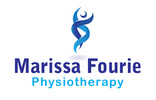
 RSS Feed
RSS Feed